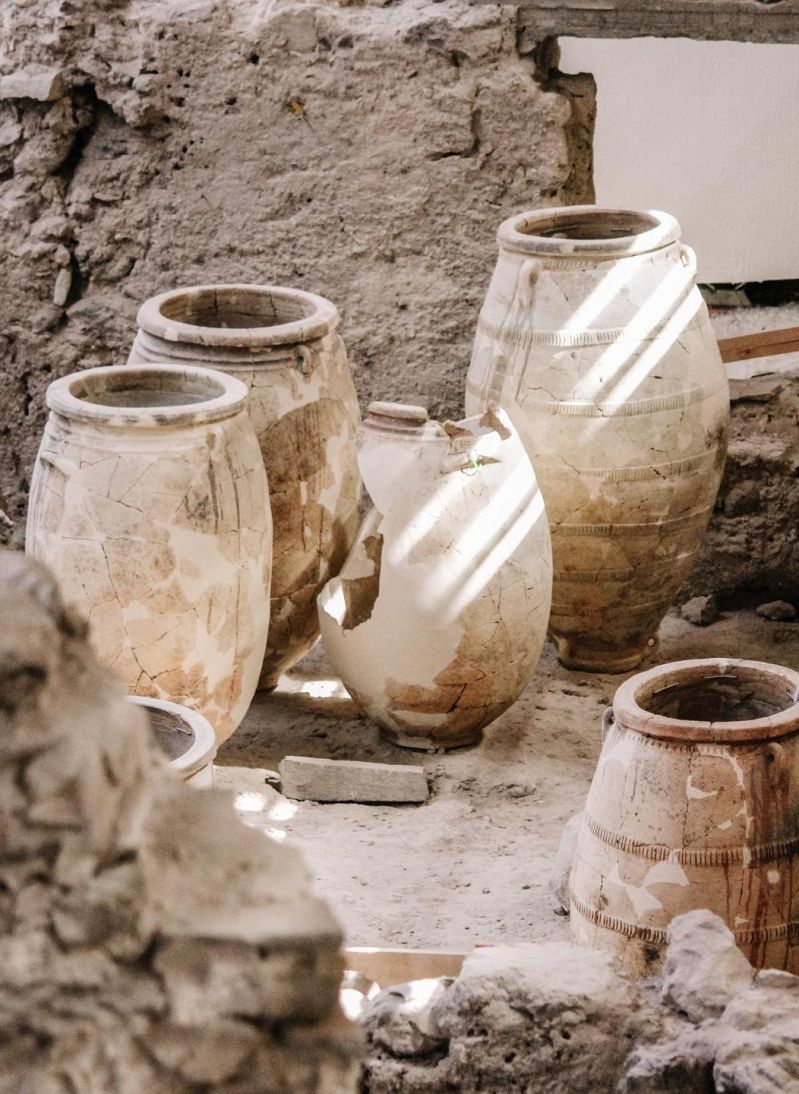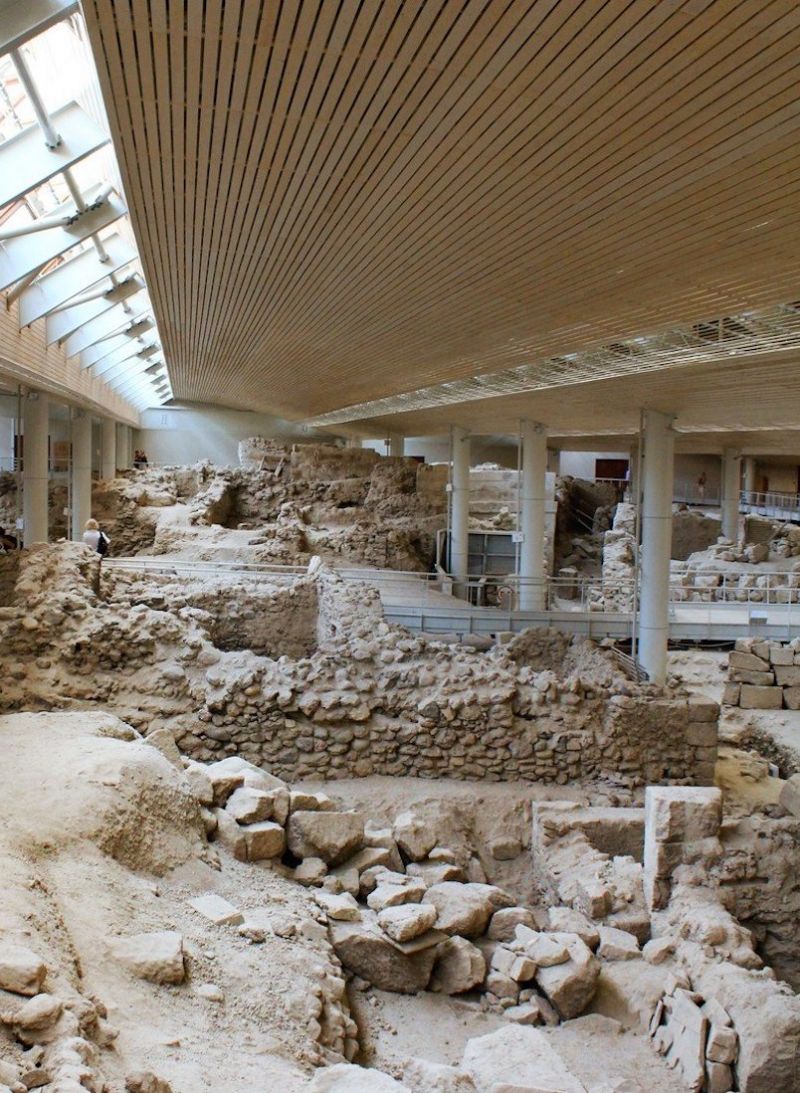JOIN the AFICIONADOS
To receive our world of travel and style delivered straight to your inbox.
A prehistoric city sealed in time beneath layers of volcanic fury, Akrotiri stands as one of the most astonishing archaeological revelations of the Aegean. Dubbed the Pompeii of the Aegean, this Minoan metropolis was a powerhouse of trade, culture, and engineering before a cataclysmic eruption in the 16th century BC obliterated it. What remains is a city frozen in time, a hauntingly well-preserved snapshot of an advanced civilisation buried beneath ash and pumice.
Before its apocalyptic end, Akrotiri was a thriving epicentre of commerce and creativity. Perfectly positioned between Crete and Cyprus, it served as a vital maritime hub, linking the Minoans with distant lands. The city boasted grand multi-storey buildings, sophisticated plumbing, and vibrant artistic expression. This was a society that flourished until nature’s wrath wiped it off the map.
Akrotiri’s final days were marked by ominous tremors that sent its inhabitants fleeing. Then, without warning, Santorini’s volcano unleashed one of the most violent eruptions in recorded history. Fire, ash, and molten rock consumed the island, leaving behind a ghost city entombed in volcanic debris. Unlike Pompeii, no human remains have been found, suggesting that the people of Akrotiri had the foresight to escape, though their fate remains a mystery.
The buried city remained forgotten for millennia until 1867 when local quarry workers stumbled upon ancient artefacts. French geologist Ferdinand Fouqué first documented the finds, but it was German archaeologist Baron Friedrich Hiller von Gaertringen who further uncovered its significance. However, the most groundbreaking work came in 1967, when Greek archaeologist Spyridon Marinatos led an extensive excavation, peeling back the layers of volcanic ash to reveal an entire city frozen in time. His work revolutionised our understanding of Minoan civilisation and cemented Akrotiri’s place as one of the greatest archaeological discoveries of the 20th century.
What makes Akrotiri truly extraordinary is the wealth of art and technology it left behind. Exquisite frescoes, untouched for nearly 4,000 years, depict vibrant scenes of daily life, maritime prowess, and elaborate rituals. The city’s urban planning – complete with an advanced drainage system and paved streets – rivals that of much later civilisations. Every fragment unearthed tells the story of a society at the height of its sophistication.
Unlike most ancient ruins, Akrotiri is not left to the mercy of the elements. A cutting-edge bioclimatic shelter allows visitors to step directly into the past, walking through the very streets once bustling with life. The nearby Museum of Prehistoric Thera in Fira houses some of the most exquisite finds, including the iconic Fisherman Fresco and Spring Fresco, bringing this lost world vividly to life.
For history enthusiasts, Akrotiri isn’t just an archaeological site; it’s a gateway into a vanished civilisation, a testament to human ingenuity, and a chilling reminder of nature’s power. Step into its streets, and you step into a lost world waiting to tell its story.

